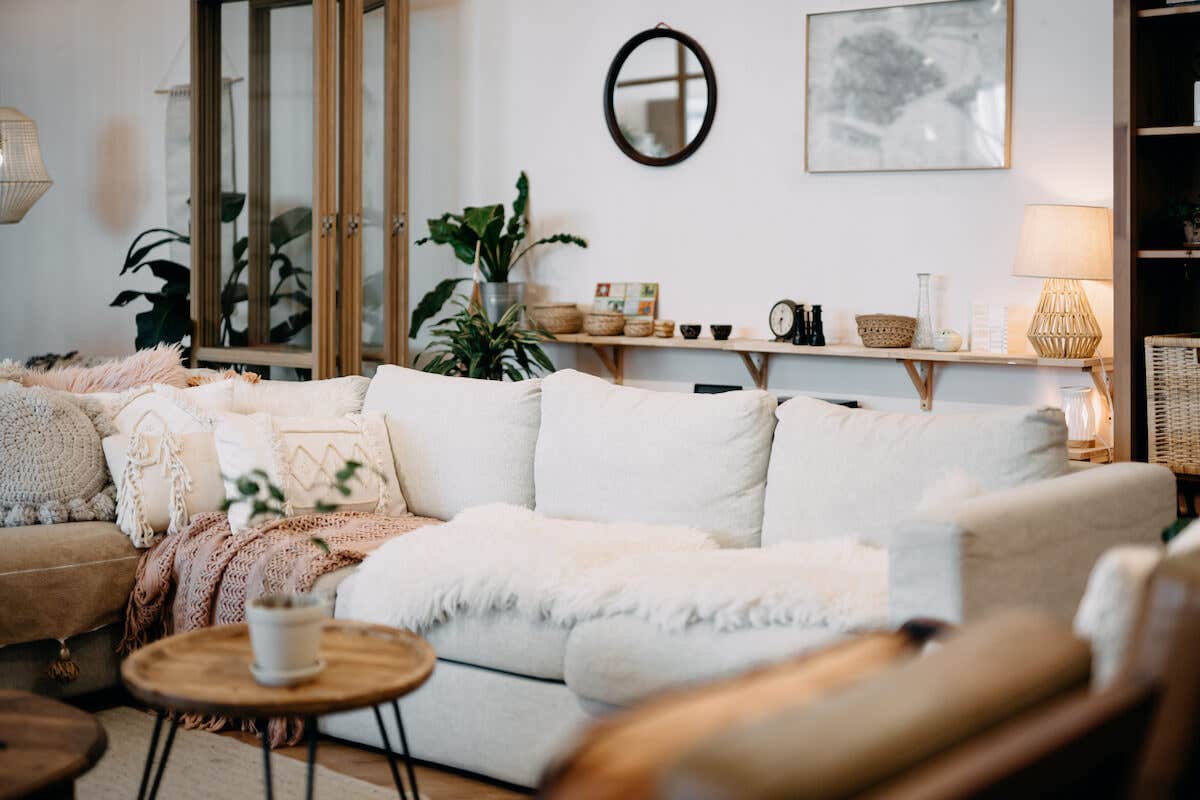There’s no question that your space affects your mood. That’s why it can feel so good to come home after a long day and curl up on your couch. Understanding the psychology of interior design can help you choose elements that beautify your home while also lifting your mood and supporting your wellbeing.
What is the psychology of interior design?
Interior design psychology is the study of how people interact with the spaces around them and how the elements of those spaces impact their emotional wellbeing. These elements can include anything from light and color to textures and open spaces, and all of which play a role in how we feel in our environment.
Light design and your mood
Light, particularly natural light, has a dramatic impact on your mood. Health experts have found that exposure to sunlight raises serotonin, a chemical your body produces that helps reduce anxiety and depression, which may lead you to choose translucent curtains or add a skylight in a room.
Allowing natural light to shine through windows can brighten your mood, but that doesn’t mean you can’t use artificial light, too. You just want to choose the type of light bulb that’s appropriate for the function of the area and the mood you’re trying to create.
Designers will often use brighter lighting in workspaces﹘the places where you need to see what you’re doing, like your kitchen. But you can choose softer lighting to create a more relaxed feeling in other spaces.
Color choices impact emotions
You may be familiar with color psychology as something advertisers use to influence consumers, but homeowners can also use it in various rooms to evoke a feeling, encourage conversations, or even make a room feel bigger.
Blues and grays, for example, are popular in living rooms because of their calming effect. In areas where you want more energy, stimulating colors like red and yellow get used more often. This is especially important in areas where people gather such as kitchens and family rooms.
Balancing comfort, function, and space
People tend to feel less anxious in a room when the furniture is arranged in a way that’s both pleasing to the eye and easy to navigate. But people usually want sofas and chairs that are comfortable and inviting. That can be a hard balance to strike, especially when you’re talking about size. A big, comfy couch may call your name in the store, but it might overwhelm your living room once you bring it home.
The trick with furniture is to find the balance between something that is comfortable and something that doesn’t take over the space, making it feel small. Luckily, current interior design trends include minimalism in the form of Japandi and maximalism. While these trends have distinctly different looks, either can support your mood depending on your personality. The multitude of colors and textures on top of big, cozy furniture you find in maximalism could be just the thing for someone who desires comfort. But if that look feels cluttered to you, then you may want to consider the clean lines of minimalism.
Creating space with organization
People tend to be happier and more creative in spacious areas. But for those of us who don’t have tons of square footage and vaulted ceilings, we can create a sense of space with smart organization.
Organization should be a key element in the design of every room in your house. The first step is to arrange your furniture so that it encourages interaction and allows people to move around it easily. However, clutter can ruin the spaciousness your layout creates, so the next step is to remove as much clutter as you can. Everything should have a place in your home. That may mean getting:
- Files systems to deal with the paper in the home office.
- Drawer organizers and utensil holders for your kitchen.
- Bins and baskets to corral kids toys and games.
- Furniture with built-in storage.
When everything has a place to go, it's easier to find what you're looking for.
If you'd like to know how your design choices can impact your home insurance, check out our article Avoid these 10 dangerous home trends.


